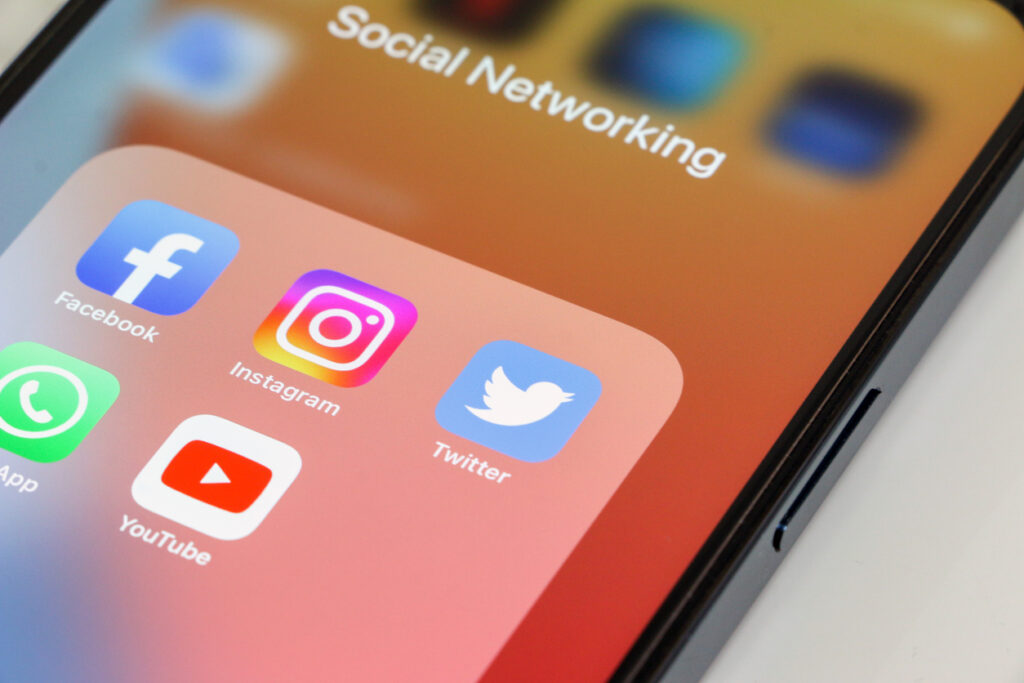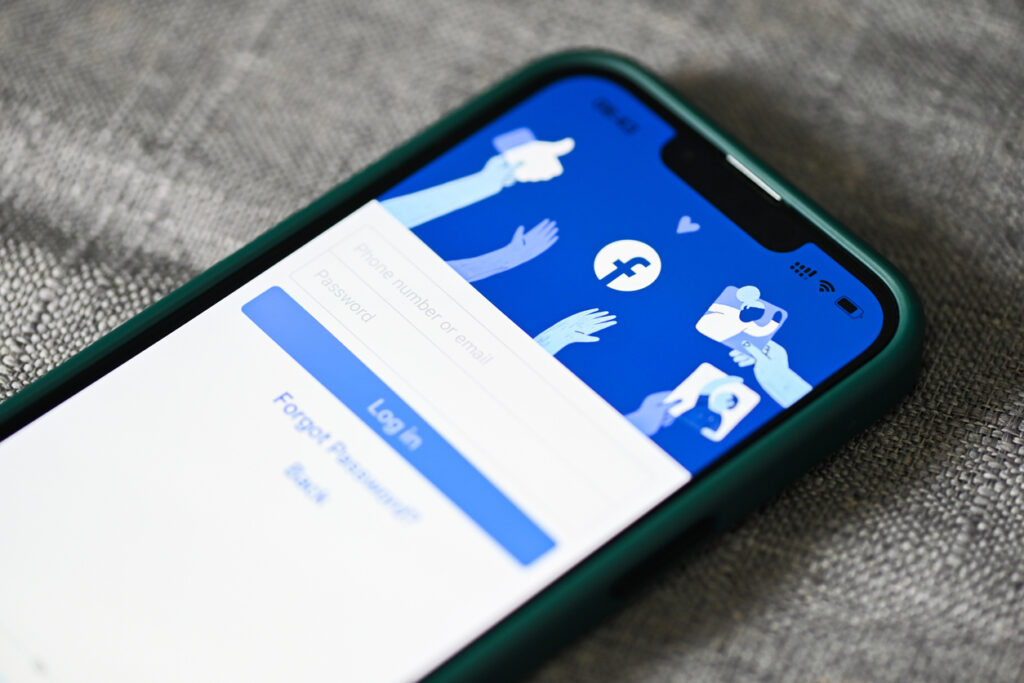Social Media
Explore our library of social media articles and discover the social media marketing tips you need to attract followers and boost engagement.
Tips for Spring Cleaning Your Digital Marketing Efforts
As the season of renewal approaches, spring cleaning is not just for your home; it is also the perfect time to refresh your digital marketing efforts. A well-structured digital spring cleaning helps businesses optimize their online presence, improve efficiency, and align marketing strategies with evolving industry trends. If your website, advertising campaigns, and content strategies…
How to Drive More Doctors Office Leads
In today’s highly competitive healthcare industry, generating a steady stream of new patients is critical for growing your practice. Whether you run a small private clinic or a large medical office, effective lead-generation strategies can help you generate leads, reach more potential patients, and ensure your practice thrives. As a trusted healthcare lead generation company,…
10 Facebook Advertising Tips for Small Businesses
For small businesses venturing into Facebook advertising, the top tips include defining your target audience, utilizing engaging visuals, crafting compelling ad copy, optimizing ads for mobile view, and regularly reviewing performance analytics to refine strategies. Additionally, employing Facebook Pixel for retargeting and tracking, setting realistic budgets, and actively engaging with audience comments can amplify ad…
How to Increase Visibility on Instagram (And Grow Your Audience)
To increase visibility on Instagram, business owners can adopt a strategic approach focusing on engaging content, intelligent hashtag use, and active community interaction. Balancing these elements is crucial in enhancing your profile’s visibility and reaching a broader audience. Are you struggling to increase visibility on Instagram and need help with your social media marketing? Instagram…
How to Get People to Like Your Facebook Page (24 Likable Tips)
To get people to like your Facebook page, post engaging, high-quality content regularly, and use eye-catching images and videos. Optimize your profile, invite friends and contacts, and promote your page on other social media platforms. Utilize Facebook ads, host contests or giveaways, and encourage followers to tag friends. Consistently interact with your audience to build…
How Much Should You Spend on Facebook Ads?
Determining your Facebook ad spend depends on your budget and campaign goals. Start small to test effectiveness, possibly $1 to $5 daily. For more impact, allocate 5-12% of your marketing budget. Regularly review performance metrics to adjust your spending for the best investment return. Tailor your budget to your specific business needs and market conditions….
What Is A Social Media Marketing Agency?
A social media marketing agency specializes in creating, managing, and optimizing social media campaigns to boost a brand’s online presence. They handle content creation, ad management, audience engagement, and analytics to drive growth and increase customer engagement on platforms like Facebook, Instagram, Twitter, and LinkedIn. They aim to enhance visibility, build brand loyalty, and generate…
Why is Facebook Good for Marketing?
Facebook is great for marketing due to its vast user base, precise targeting options, and diverse ad formats. It allows businesses to reach specific audiences based on demographics, interests, and behaviors. Additionally, Facebook offers detailed analytics to measure campaign effectiveness, ensuring better ROI and engagement. Businesses often struggle to find efficient, cost-effective ways to reach…
How to Grow Your Social Media Following
Growing your social media following requires creativity, consistency, and engagement. Focus on crafting compelling content tailored to your audience’s interests, post regularly to keep your community engaged, use hashtags strategically to reach wider audiences, and interact with your followers to build a loyal community. Remember, authenticity and interaction are your best tools for growth. A…
How to Repurpose Content for Social Media
Understanding how to repurpose content for social media can help your company amplify its reach, enhance engagement, and maximize ROI on every piece of content. It allows for consistent platform presence, caters to varied audience preferences, and reinforces messaging without additional resource expenditure. Understanding this process ensures content longevity, diversifies marketing strategies, and strengthens brand…
10 Benefits of Advertising on Instagram
There are several unique benefits of advertising on Instagram. Instagram advertising opens doors to a world where visual storytelling meets precision targeting, offering businesses a unique opportunity to captivate a global audience. With cost-effective campaigns, detailed performance tracking, and diverse ad formats, small business owners can boost brand awareness, drive traffic, and increase sales, making…
How to Create Engaging Posts for Social Media
Creating engaging posts for social media involves a blend of creativity, strategy, and understanding your audience. It’s about presenting compelling content that resonates, encourages interaction, and adds value to your followers’ social media experience. With millions of posts flooding social feeds daily, capturing and maintaining your audience’s attention is challenging. This struggle often leads to…
21 Thrilling Advantages of Social Media Advertising
The advantages of social media advertising stand out significantly over other types of advertising. It offers unprecedented targeting precision, interactive formats, and instant feedback. These platforms enable businesses to connect with their audience more personalized and engagingly, boosting visibility and interaction far beyond what traditional advertising methods typically achieve. While organic social media marketing strategies…
10 Effective B2B Social Media Strategies
B2B social media strategies are essential for connecting with other businesses and professionals. They involve targeted content, networking, and engagement approaches tailored to business clients’ unique needs and behaviors. Do you need help to make an impact on social media marketing in the B2B space? You’re not alone. It’s a challenging arena, but with the…
How to Measure Social Media Marketing Success
Understanding how to measure social media marketing success involves analyzing various metrics that reflect audience engagement, brand reach, and the effectiveness of marketing strategies. Key indicators include engagement rates, follower growth, website traffic from social media, and return on investment (ROI). Not sure how to measure social media marketing success for your business? You’re not…
How Much Do Social Media Ads Cost?
The cost of social media ads can vary widely, typically ranging from a few cents to over $5.00 per click depending on the platform, targeting options, ad format, industry, and competition level. Venturing into the realm of social media advertising can evoke questions about the investment required. Whether you’re a small business owner or part…
How to Use LinkedIn for B2B Marketing
LinkedIn is an indispensable tool for B2B marketers, offering a professional platform to connect with potential clients, strengthen brand recognition, and generate quality leads. The network’s focus on business and professionalism makes it an ideal channel for targeted B2B outreach. The challenge of B2B marketing often lies in reaching the right audience with the right…
How to Create Content for Instagram Marketing
Some effective ways to create content for Instagram include posting high-quality images and videos, creating engaging stories and reels, and sharing user-generated content. Leveraging Instagram’s multiple features can help you build a strong brand presence and foster community engagement. Struggling with a lackluster Instagram profile? You’re not alone. Many businesses find it challenging to stand…
How to Use TikTok for Your Business
You can use TikTok for your business by creating engaging short-form videos that showcase your products or services. Utilize features like challenges, duets, and trending hashtags to amplify your reach. TikTok Ads help in precise targeting, while the new TikTok Shop allows for seamless product integration. Analyze metrics to refine strategies and consider hiring a…
How to Run Facebook Ads for Ecommerce
To run Facebook ads for ecommerce, start by setting up a Business Manager account on Facebook. From there, you’ll need to identify your target audience, set a budget, and create compelling ad content before launching your campaign. Unlock the untapped potential of Facebook advertising for your ecommerce business and catapult your brand to new heights….
How to Remove Reviews on Facebook
To remove reviews on Facebook, start by navigating to your business page. Then, go to the “Reviews” tab, where you can choose to delete individual reviews or disable the Reviews section altogether. It’s crucial to note that deleting reviews should be your last resort, and it’s often better to address negative feedback constructively. For business…
How to Promote Your Business on Instagram
You can promote your business on Instagram by using a variety of methods such as creating engaging content, using Instagram Ads, partnering with influencers, utilizing Instagram Stories and Shopping, hosting contests, leveraging relevant hashtags, and interacting with your audience. Remember, consistency and quality content are key, and it’s important to engage with your followers and…
Twitter Becomes X: The ‘Everything App’ and Your Digital Marketing
Over the weekend, Elon Musk announced Twitter is now X, which aims to become the “everything app’ people use for … everything. While the change is sudden, it’s never too early for business owners to start thinking about the potential digital marketing opportunities X might bring in the near future. As the digital world continues…
How to Use Instagram for Business #Effectively
You can use Instagram effectively for business by knowing your audience, creating engaging content, scheduling posts, using relevant hashtags, and leveraging Instagram’s unique features like Stories. Regularly monitor insights and adapt your strategy based on performance metrics. Are you struggling to get traction with your business on Instagram? Do you feel like you’re pouring time…
How to Set Up and Use Threads
Threads is a new app, built by the Instagram team, for sharing text updates and joining public conversations. In light of Twitter’s unveiling of widely unpopular changes and Instagram’s 2.35 billion active users, Threads is positioned to skyrocket in popularity and attract massive adoption as a Twitter alternative. What is Threads? Threads is a highly-anticipated…
OTHER ARTICLES YOU MIGHT BE INTERESTED IN

SMG Marketing Makeover 2025 - What’s Working, What’s Not, and What’s Next

Using Community Outreach as a Marketing Strategy


A Complete Guide to Google Performance Max (PMAX) for Healthcare

Medical Practice SEO - The Ultimate Guide for Doctor's Offices

10 Digital Marketing Ideas for Doctor's Offices

14 Valentine's Day Marketing Ideas



























